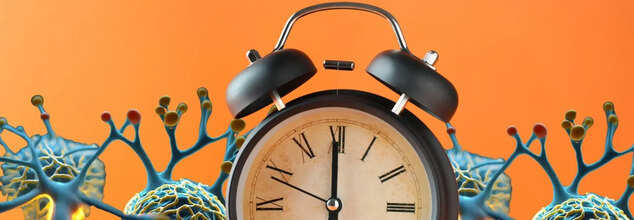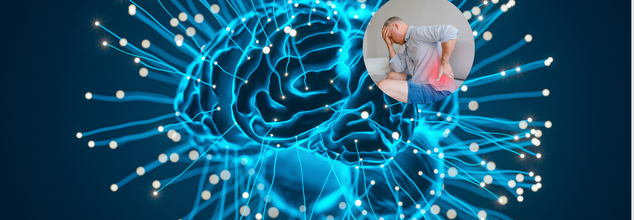
(Credit-Canva)
Toxic Relationships Take Away More Than Just Your Confidence – Less Known Effects, You Should Know
Being in a relationship with someone means a strong commitment and a level of trust you cannot gain in others, sometimes even family. While we can hope for a good relationship and even work towards it, sometimes they can turn toxic and cause a lot of damage to our self-esteem and mental health. According to 2021-22 Australian Bureau of Statistics, about 4.2 million people aged 18 and above have experienced violence, emotional abuse or abuse. 17% women and 5.5% men have experience partner violence, 23% women and 14% men have experienced emotional abuse and 16% women, and 7.8% men have experienced economic abuse from their partners
Sometimes these relationships can become really normalised for people, some do not even believe they are in an abusive relationship unless they experience the drastic effects of it. A toxic relationship could be among anyone, parent and child, romantic partners, friends even work relationships. It is a relationship where you are not respected or supported. There are also other aspects like constant fights, demeaning behavior, abuse, name calling etc. No matter who it is, a toxic relationship can hurt your feelings and your body in the long run. There are many negative consequences of being in a toxic relationship.
Impact of Toxic Relationships On Mental Health
Toxic relationships significantly impact mental and emotional well-being, increasing the risk of depression through constant feelings of rejection and threat. The National Legal Service UK explains people who have been in toxic relationships unconsciously seek out similar relationships in the future and repeat the harmful patterns. The worrisome nature of such relationships causes people to normalize abusive behaviors. They makes them ignore clear signs of abuse and make their mental health worse. Manipulation and a lack of acceptance picks away at the self-esteem and confidence of the victim, leading to feelings of inadequacy. The emotional burden of perpetually worrying about a partner's problems results in profound exhaustion.
Physical Impact From Being In A Toxic Relationship
High Blood Pressure
Constant relationship stress elevates blood pressure, particularly in men. Ongoing negativity triggers physiological responses that contribute to long-term hypertension, impacting cardiovascular health.
Chronic Stress
Toxic relationships induce persistent stress, disrupting mental and physical health. This constant strain weakens the immune system, interferes with thyroid function, and destabilizes mood, leading to various health issues.
Inflammation
Frequent conflict activates the body's "fight or flight" response, causing chronic inflammation. This prolonged state of readiness damages the body, increasing the risk of severe health complications over time.
Heart Health
Ongoing stress from unhealthy relationships negatively affects heart health. Conversely, positive, supportive relationships promote cardiovascular well-being, reducing the risk of heart-related problems.
Weight Gain
Unhappiness in a relationship can lead to weight gain. Emotional distress from relationship problems distracts from healthy eating and exercise routines, contributing to unhealthy weight fluctuations.
Weakened Immune System
Persistent stress from toxic relationships compromises the immune system's efficacy. The body's ability to fight off infections is diminished, increasing susceptibility to various illnesses.
Worsened Chronic Illness
For those with chronic conditions, relationship conflict exacerbates symptoms. The added stress from fighting intensifies pain and discomfort, worsening the overall impact of existing illnesses.

Credit: Canva
Your Brain Starts Eating Itself If You Don't Sleep Enough, Research Finds
There is no denying that we've all grown up listening to idioms that refer to sleep as something unproductive. For years, society has glorified the idea of sacrificing rest to achieve more, pushing the narrative that success comes at the cost of sleep. However, as cases of sleep disorders such as insomnia, sleep apnea, and chronic fatigue increase, health experts are raising serious concerns about the repercussions of sleep deprivation. Recent research has now revealed an alarming consequence—when deprived of sleep, the brain quite literally starts eating itself.
A study published in *The Journal of Neuroscience* has uncovered that prolonged wakefulness leads to the brain consuming its own healthy cells. Researchers found that astrocytes, which are responsible for maintaining and repairing the brain, become overly aggressive in trimming unnecessary synapses. While this process is beneficial in moderation, chronic sleep deprivation causes astrocytes to over-prune, damaging essential neural connections instead of just clearing out the excess. This means that rather than helping the brain function efficiently, persistent lack of sleep triggers its deterioration over time.
Additionally, the study found that microglia—the brain’s immune cells—become hyperactive due to sleep deprivation. Normally, microglia work to clear out harmful debris, bacteria, and dead cells to protect the brain from infections and inflammation. However, when sleep is consistently disrupted, these immune cells remain in a prolonged state of activation. This sustained hyperactivity may lead to chronic inflammation in the brain, which has been linked to several neurodegenerative diseases, including Alzheimer’s and Parkinson’s.
The consequences of sleep deprivation extend far beyond just feeling fatigued. Over time, the cumulative damage caused by these changes in brain activity may accelerate cognitive decline, impair memory, and increase the risk of developing neurological disorders. Alarmingly, researchers also observed that chronic sleep loss contributes to overall brain shrinkage. This suggests that deep, consistent sleep is one of the most powerful ways to preserve long-term cognitive health and prevent irreversible damage.
It is well known that sleep plays a crucial role in clearing out toxins from the brain, consolidating memory, and regulating emotions. Losing too much of it can disrupt these essential functions, potentially leading to mood disorders such as depression and anxiety. Furthermore, studies suggest that sleep deprivation affects decision-making skills and reaction times, increasing the likelihood of accidents and poor judgment.
With the rise of digital distractions, work pressure, and social commitments, people are sleeping less than ever before. However, these new findings reinforce the importance of prioritizing quality sleep. Experts suggest that maintaining a consistent sleep schedule, reducing screen exposure before bed, and practicing relaxation techniques such as meditation or reading can significantly improve sleep quality.
While we may be tempted to trade sleep for productivity, the science is clear—skimping on rest can have serious long-term effects on brain health. If chronic sleep deprivation continues, the brain may begin to deteriorate at an accelerated pace, making it more susceptible to cognitive decline and neurodegenerative diseases. In the end, investing in proper sleep is not just about feeling rested; it’s about ensuring that the brain remains strong and resilient for years to come.

Credit: Canva
Gluten-Free Black Rice Is Great For Your Eyes-But What Else Does It Offer?
When we talk about rice, we mostly talk about white or brown. However, not many people know that there is a black-purple coloured variant of this called Black rice. Packed with nutrients, this variant owes its purple colour to a pigment called anthocyanin, which has potent antioxidant properties. Intrestingly, in ancient China, black rice was considered so unique and nutritious that it was forbidden for everyone beyond royalty.
What's Special About Black Rice?
1. A Rich Source of Essential Nutrients
Black rice stands out among rice varieties due to its high protein content. In comparison to brown rice, which contains 7 grams of protein per 100 grams, black rice offers 9 grams. It is also a valuable source of iron, a mineral crucial for oxygen transport in the body.A quarter cup (45 grams) of uncooked black rice provides:
Calories: 160
Fat: 1.5 grams
Protein: 4 grams
Carbohydrates: 34 grams
Fiber: 1 gram
Iron: 6% of the Daily Value (DV)
2. High in Antioxidants
Beyond its protein and fiber content, black rice is rich in antioxidants—compounds that help combat oxidative stress and reduce the risk of chronic diseases such as heart disease, Alzheimer’s, and cancer. Studies indicate that black rice has the highest antioxidant activity among rice varieties, containing over 23 beneficial plant compounds, including flavonoids and carotenoids.
3. Contains Anthocyanins for Added Health Benefits
Anthocyanins, the flavonoid pigments responsible for black rice’s dark hue, are known for their potent anti-inflammatory, antioxidant, and anticancer properties. Research suggests that consuming anthocyanin-rich foods can lower the risk of chronic diseases such as heart disease and obesity.
4. Supports Heart Health
Though research on black rice and heart health is ongoing, its flavonoids have been linked to a lower risk of cardiovascular disease. Some studies suggest that anthocyanins can improve cholesterol levels by increasing HDL (good) cholesterol and reducing LDL (bad) cholesterol. While further research is needed, early findings suggest black rice may help reduce plaque buildup in arteries.
5. Potential Anticancer Properties
Black rice’s anthocyanins may also play a role in cancer prevention. Population studies show that higher intake of anthocyanin-rich foods is associated with a reduced risk of colorectal cancer. Additionally, laboratory research suggests that anthocyanins from black rice can inhibit the growth and spread of breast cancer cells. However, more human studies are needed to confirm these effects.
6. Promotes Eye Health
Black rice contains significant amounts of lutein and zeaxanthin, two antioxidants that protect the eyes from damage caused by free radicals. These compounds help filter harmful blue light and may reduce the risk of age-related macular degeneration (AMD), cataracts, and diabetic retinopathy. Animal studies suggest anthocyanins may also protect the retina, though human research is still limited.
7. Naturally Gluten-Free
For individuals with celiac disease or gluten sensitivity, black rice offers a nutritious, gluten-free alternative to many whole grains. It provides essential nutrients without triggering digestive issues associated with gluten-containing grains like wheat, barley, and rye.
8. May Aid in Weight Management
Black rice’s high protein and fiber content can promote satiety, potentially aiding in weight management. Some animal studies suggest that anthocyanins may help reduce body fat, though human studies are still limited. A study found that consuming a mix of black and brown rice led to greater weight loss compared to eating white rice.
9. Additional Health Benefits
May Help Regulate Blood Sugar: Animal studies suggest that black rice may aid in blood sugar control, though human trials are required for confirmation.
Supports Liver Health: Research on mice indicates that black rice may reduce fat accumulation in the liver, potentially lowering the risk of non-alcoholic fatty liver disease (NAFLD).
10. Easy to Cook and Versatile
Cooking black rice is similar to preparing other rice varieties. Simply combine the rice with water or broth, bring it to a boil, then reduce the heat and let it simmer for 30–35 minutes until tender. To achieve a fluffier texture, rinse the rice before cooking to remove excess starch.
Black rice can be used in various dishes, including grain bowls, stir-fries, salads, and desserts like rice pudding.

Pain Relief Without Pills? This Bizarre Brain Hack Could Help
Imagine if pain management didn't need a pill, injection, or surgery—just a simple mind trick. It may sound like a magic trick, but new studies indicate that our brain can be tricked into alleviating pain through a remarkable psychological phenomenon.
A recent paper in the journal Pain Reports documents a strange but powerful method for reducing pain—by an illusion called the Rubber Hand Illusion (RHI). This pioneering research may unlock the door to non-drug therapy for chronic pain, presenting a choice for the millions of victims.
This study shows how strong the brain is in forming our experience of pain. By using the mind's capacity to be deceived through illusions, we can potentially be on the threshold of a new age in pain relief—one that has no need for drugs but rather uses the brain's own neuroplasticity.
What Is the Rubber Hand Illusion?
The Rubber Hand Illusion is a well-known psychological test that deceives the brain into thinking that an artificial hand belongs to the body. In earlier research, subjects were seated with one hand concealed behind a screen and a realistic rubber hand in front of them. When both the real and artificial hands were touched at the same time, most subjects reported feeling the sensations in the rubber hand as if it were their own.
Following this idea, researchers at Ruhr University Bochum in Germany examined whether the illusion would be able to impact pain perception. Rather than touch, they applied heat and light to examine how visual and sensory integration impacts pain perception.
Can Visual Illusions Reduce Pain?
The experiment included 34 subjects who were subjected to a rubber hand that was red-glowing while their concealed actual hand was provided with heat stimuli of varying warmth to the level of pain. The subjects then rated their pain on a scale with their other hand.
The control group received the rubber hand in an upside-down position, and this interfered with the body ownership illusion. The outcomes were dramatic: when participants saw the rubber hand in its appropriate position, they responded with significantly decreased pain levels—sometimes within a mere 1.5 seconds after the illusion had been induced. This pain reduction continued during the experiment, showing a clear connection between the illusion and pain regulation.
One of the most important insights that emerge from this research is that of visual analgesia—a situation where mere observation of a part of the body in pain will alleviate the discomfort. What this finding implies is that how we perceive our bodies visually has an important function to play in the alleviation of pain.
The findings suggest that when individuals feel the rubber hand is their own, their brain recalibrates its reaction to pain accordingly, said lead researcher Martin Diers. Although the precise neural mechanisms involved in this process are not yet understood, the research paves the way for further investigation into how the brain combines visual and sensory information.
Does this Drug-Free Method Help in Pain Relief?
With the ever-present opioid crisis and growing fears over the side effects of pain medication, finding alternative pain relief options is more important than ever. Chronic pain harms millions globally and common painkillers often involve risks like addiction, tolerance build-up, and adverse side effects.
The Rubber Hand Illusion provides a fascinating, non-surgical means to potentially treat pain without medication. As this study is in its infancy, however, there is potential for implications. Healthcare professionals might include illusion-based treatment in pain therapies if further research establishes these findings. Patients suffering from arthritis, fibromyalgia, or neuropathic pain could benefit.
Could This Lead to Better Pain Treatments?
Though the Rubber Hand Illusion is not yet a widely accepted treatment, its success implies that other mind-body interventions like it have the potential to transform pain therapy. Future research can look into means of amplifying the illusion's analgesic effect, potentially with virtual reality (VR) or augmented reality (AR) platforms.
For example, VR technology might transport the user into a world where he or she "sees" the hurt limb healing or senses lower levels of pain through deception. These technologies might make feasible, home-based therapies for the chronically ailing.
© 2024 Bennett, Coleman & Company Limited

